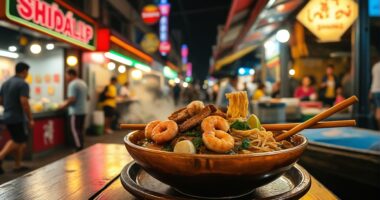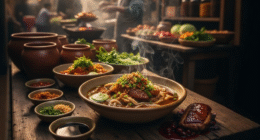Food blogging is more than just sharing recipes—it’s about storytelling, creativity, and passion. The art of food blogging combines culinary knowledge with engaging writing and stunning visuals to create an experience that draws readers in. Whether you’re a home cook, a restaurant reviewer, or an aspiring influencer, learning the techniques behind effective food writing can help you stand out in a crowded digital space.
Understanding the Essence of Food Blogging
At its core, food blogging is about connection. Readers want to feel inspired—not only by the dishes you share but also by the stories behind them. Successful food bloggers understand that their posts are more than instructions; they’re a journey through taste, culture, and emotion. To achieve this, authenticity and consistency are key. Write in your own voice, share your experiences honestly, and focus on what makes your culinary perspective unique.
Find Your Food Blogging Niche
The first step for aspiring food writers is to identify a clear niche. Are you passionate about vegan cuisine, quick family meals, traditional dishes, or gourmet desserts? Choosing a niche helps you attract the right audience and establish yourself as an authority. Search engines also reward focused content, which improves your SEO ranking. For example, instead of writing “Easy Dinner Recipes,” narrow it down to “Easy Vegetarian Dinner Recipes for Busy Weeknights.”
Writing Techniques That Engage Readers
Great food writing goes beyond describing how food tastes—it evokes emotion. To keep readers hooked, focus on sensory language, descriptive storytelling, and relatable moments. Use vivid adjectives to describe flavors and textures, and weave in anecdotes that humanize your recipes.
Tell a Story Behind Every Recipe
Readers love to know where a recipe came from or what inspired it. Maybe it’s a dish your grandmother used to make or something you discovered while traveling. These personal touches create a narrative connection between you and your readers. The story adds context and transforms a simple recipe into a memorable experience.
Keep Your Writing Clear and Organized
While creativity is essential, clarity is just as important. Structure your blog posts logically—start with an introduction, follow with ingredients and step-by-step instructions, and end with helpful tips or serving suggestions. Use bullet points or numbered lists for better readability. Short paragraphs and subheadings improve SEO and make your post easier to scan.
Mastering Food Photography and Presentation
Food blogging is as much visual as it is textual. High-quality images attract readers and encourage them to try your recipes. Learn the basics of composition, natural lighting, and styling. Use props like rustic plates, napkins, or utensils to create a mood that complements the dish.
Editing and Enhancing Photos
Editing tools such as Lightroom or Canva can elevate your food photos. Adjust brightness, contrast, and saturation to make your images pop. Remember, authenticity matters—avoid over-editing or altering colors unrealistically. A well-edited, true-to-life image builds trust with your audience.
SEO and Promotion Strategies for Food Bloggers
Search engine optimization (SEO) plays a crucial role in getting your food blog noticed. Optimize your posts by using relevant keywords naturally within your titles, headings, and meta descriptions. Add descriptive alt text to images, include internal links to related posts, and write compelling meta tags that encourage clicks. Additionally, promoting your blog on social media platforms such as Instagram, Pinterest, and Facebook can increase visibility and engagement.
Engage With Your Audience
Respond to comments, ask readers for feedback, and build a community around your content. Interaction fosters loyalty and helps your audience feel valued. Over time, this engagement can turn casual readers into loyal fans who regularly share your posts.
Conclusion: Turning Passion Into a Culinary Voice
The art of food blogging lies in the balance between creativity, storytelling, and technique. By honing your writing skills, improving your photography, and mastering SEO, you can turn your passion for food into a thriving online presence. Remember, every great food blogger started somewhere—so stay consistent, experiment, and let your culinary voice shine.









